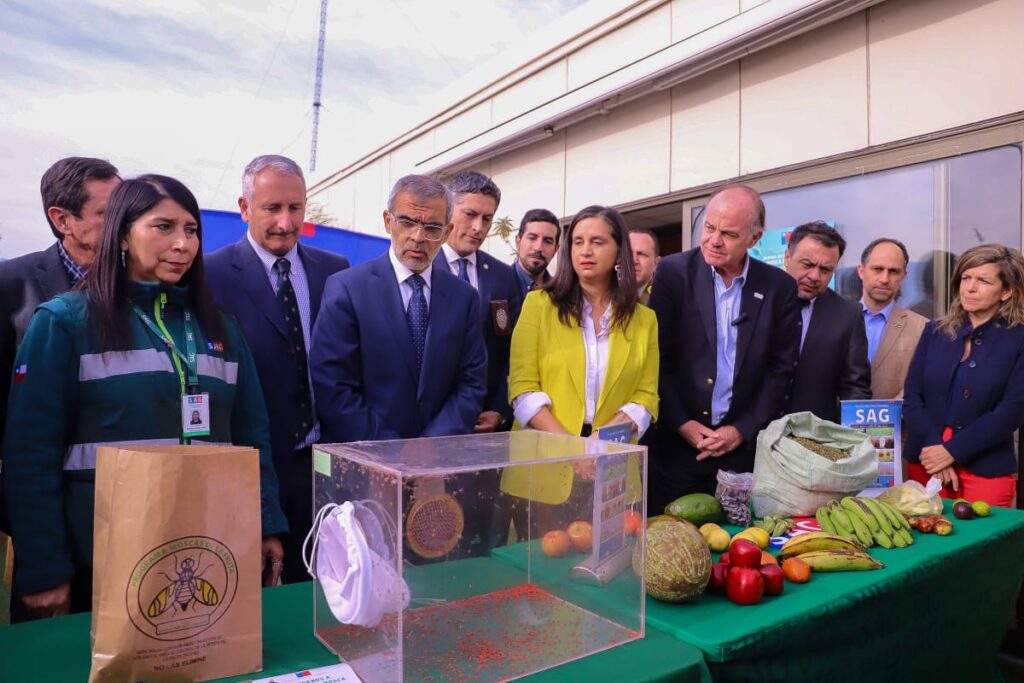Chile has established itself as the world's leading exporter of cherries, standing out for its high-quality production and its ability to meet international demand, especially in Asian markets. This achievement is the result of several factors including favorable weather conditions, advanced technology in agriculture, and a solid logistics infrastructure.
During 2023, global cherry exports reached an estimated volume of 750,538 tons and a FOB value of 3.447 billion dollars, according to the 2024 Cherry Yearbook prepared by iQonsulting.
Latin America is the leader in the ranking, with 53 percent of exports, represented by 380 thousand tons; of this figure, our country represents 99 percent.
Europe is second in the ranking of cherry exports, with 121 thousand tons. An important place in the old continent is occupied by Turkey, the main producer of cherries in the world, however Chile is positioned as the number one exporter of the red fruit worldwide.
Key factors for success
Chile's position as number one in cherry exports is not a coincidence, but rather the result of the joint work of all the processes in the production chain of this fruit species. Of course, climatic conditions, soil, post-harvest, etc. are important.
- Weather Conditions:
- Chile has a Mediterranean climate in the central region, ideal for growing cherries. Moderate temperatures, low humidity and low frost incidence during spring and summer favour the development of high-quality fruit. Accumulation of chilling hours is essential for cherry production, and Chile, in much of its territory, offers temperatures below 7.5 degrees Celsius, necessary to accumulate chilling.
- Agricultural Technology:
- Chilean farmers have adopted advanced agricultural practices, including the use of drip irrigation technologies, integrated pest management and modern pruning techniques, which optimize production and improve the quality of cherries.
- High Quality VarietiesIn Chile, there are 11 main varieties of cherries that make up the entire season's supply. These are varieties that, with the proper agronomic management, meet the expectations in terms of size, sweetness, appearance, among other aspects, required by international markets. However, new varieties are currently being evaluated to replace some that present some complexities when it comes to being exported.
- Infrastructure and Logistics:
- Chile has developed a solid transport and logistics infrastructure that allows for rapid export of fresh cherries to international markets. The country has modern ports and an efficient cold chain that guarantees the freshness of the product during transport.
- International Markets:
- The main destination for Chilean cherry exports is Asia, especially China. Demand in this market has grown significantly due to Chinese consumers' preference for fresh, high-quality products, coinciding with the Lunar New Year, a period of high demand.
- Technical Advice:
- Chile has renowned advisors specializing in cherry production, who are a fundamental part of the management carried out in the orchards; the work carried out by these specialists is essential to achieve the objectives of each season.
Economic Impact
- Job CreationThe cherry industry generates thousands of direct and indirect jobs in the growing areas and in the processing and export stages.
- Export Revenue: Cherries have become an important source of export income for Chile, contributing significantly to the national economy.
- Regional Development: Cherry cultivation has boosted the economic development of several agricultural regions in Chile, mainly in Maule and O'Higgins, where 85 percent of the total planted area in the country is concentrated.
Challenges and Opportunities
- Sustainability:The industry must continue to advance sustainable practices to maintain long-term competitiveness, including efficient use of water and reducing environmental impact.
- Market Diversification: Expand export markets beyond Asia to reduce dependence on a single market and take advantage of new business opportunities.
- Innovation: Continue investing in research and development to improve cherry varieties and cultivation techniques, ensuring adaptation to changing climatic and market conditions.
As a world leader in cherry exports, Chile has demonstrated the importance of combining favorable natural conditions with technological advances and efficient infrastructure. The cherry industry has not only strengthened the national economy, but has also improved the living conditions of many farming communities. With proper management, technical advice, a focus on sustainability and innovation, Chile is well positioned to maintain and expand its leadership in the global cherry market.










